Did you know over 70% of new European homes use underfloor heating? Imagine stepping onto a consistently warm floor every morning—no chilly toes, no bulky radiators, just sleek, invisible comfort. In this comprehensive guide, you’ll discover why underfloor heating is quickly becoming the preferred heating solution for modern families. Whether you’re planning a renovation or building your dream home, we’ll show you how radiant floor systems upgrade both comfort and efficiency. Curious about costs, installation, or the best floor coverings? Read on to unlock the secrets of cozy, energy-saving floors designed for today’s living.

Unlocking the Power of Underfloor Heating: Surprising Data and Instant Cozy Floors
Underfloor heating is transforming how people experience home comfort. Across Europe, over 70% of new builds now include floor heating , demonstrating its popularity and effectiveness—especially in countries with cold winters. This shift is fueled by homeowners’ desire for even warmth, energy efficiency, and a sleek design that eliminates the need for unattractive radiators or vents. Floor heat technology delivers gentle, steady heat from the ground up, creating an environment that feels both luxurious and practical .
What makes underfloor heating so appealing? Unlike traditional forced air systems that leave hot and cold spots, radiant floor heat ensures warmth is distributed evenly across every inch of your home. It’s no wonder families love relaxing or playing barefoot—even in the middle of winter. Upgrading with these radiant solutions means better energy efficiency, improved air quality, and reduced heat loss , all wrapped up in a heating system you barely notice—except for the cozy comfort. Ready to see why Europe’s leading the way? Let’s dive in.

- Understand the fundamentals and benefits of underfloor heating
- Compare radiant floor heating to traditional heating systems
- Assess costs, installation methods, and energy efficiency
- Discover maintenance tips and best floor system compatibility
- Get answers to frequently asked questions to inform your purchase
Revealing the Impact of Underfloor Heating: Why Over 70% of New Homes in Europe Choose Floor Heating Systems
The growing popularity of underfloor heating systems in Europe stems from clear advantages in both comfort and energy consumption. Builders and homeowners are swapping out bulky radiators and inconsistent forced air for radiant floor heat , which delivers superior comfort with less energy. One major reason for this preference is the air quality : since underfloor systems don’t circulate dust like traditional forced air, they’re perfect for families who value a healthy indoor environment.
Additionally, modern floor heating systems are compatible with an array of energy sources, including eco-friendly heat pumps and renewable technologies. This compatibility helps homes reduce reliance on fossil fuels and lower their carbon footprint. Combined with smart thermostats, users can fine-tune temperatures in each room, optimizing comfort and efficiency. It’s a win-win: cozy floors and lower heating bills , all while supporting a greener future.
If you’re considering a local installation or want to see how underfloor heating can specifically transform your living space, you might find it helpful to explore practical insights on underfloor heating solutions in Chesterfield . This resource offers a closer look at system options, installation tips, and real-world benefits for homeowners.
Understanding Underfloor Heating: Definition, Types, and Floor Heating Technology
To make the best choice for your home, it’s important to understand exactly what underfloor heating is. In essence, it’s a method of heating indoors where warmth is provided by heating cables, mats, or water pipes installed beneath the floor’s surface. This transforms your entire floor system into a gentle, radiant heat source—quiet, efficient, and virtually invisible—suitable for nearly any modern home.
Two main types of underfloor heating exist: electric radiant floors and hydronic (hot water) systems . Each type has its strengths, suited for unique spaces and preferences. Understanding the technology and how these systems work can help you determine which option best matches your project’s size, expectations, and desired comfort.
What is Underfloor Heating? How Radiant Floor Heat Works
Underfloor heating , also known as radiant floor heating , is a heating system that warms your home from the ground up. Electric underfloor systems use thin heating cables or mats, while hydronic systems pump hot water through pipes embedded beneath your floor. In either system, the floor becomes a large, touchable radiator, gently releasing radiant heat into the living space.
Unlike conventional central heating , which blasts air through ducts or relies on wall radiators, radiant floors heat objects and people directly. This means you experience warmer feet and lower thermostat settings for the same comfort—a boost for both your wellbeing and your wallet. The slow, even heat reduces temperature swings and eliminates drafts, all while improving indoor air quality by avoiding dust circulation.
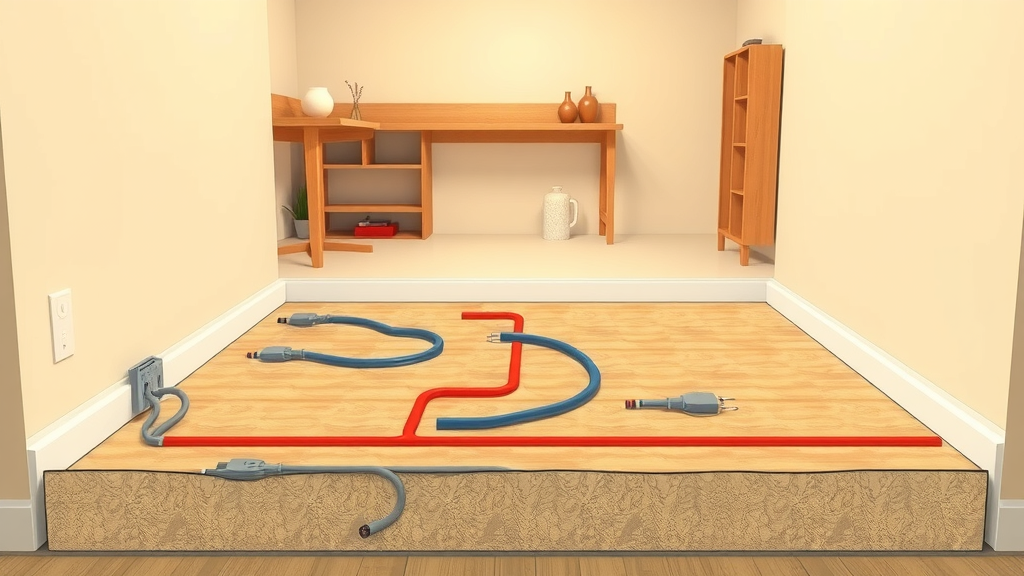
Types of Underfloor Heating Systems: Electric Radiant and Hydronic Floor Heat Solutions
There are two primary underfloor heating systems : electric radiant and hydronic. Electric radiant floor heat uses electrical cables or mats placed directly beneath your floor finish. It’s well-suited for smaller rooms or retrofits because installation is fast and doesn’t significantly increase floor height. Typical use cases include bathrooms, kitchens, or single rooms in need of a heating upgrade.
Hydronic (water-based) radiant floor heating circulates hot water through a network of pipes. Though initially more labor-intensive to install, it excels in heating large spaces efficiently and works well in whole-house applications. This system is ideal for those seeking to reduce running costs by integrating with heat pumps or solar water heaters. Understanding the differences will help you select the best floor heat solution for your comfort and budget.
| Type | Pros | Cons |
|---|---|---|
| Electric Radiant | Fast to install, ideal for retrofits | Higher running cost in large areas |
| Hydronic (Water) | Energy efficient heating for large spaces | Higher initial installation cost |
Key Benefits of Underfloor Heating Systems vs. Traditional Heating
What sets underfloor heating apart from radiators or forced air? The answer lies in radiant heating comfort, improved air quality, and expert energy efficiency . A radiant floor delivers a smooth, uniform temperature, warming everything and everyone in the space from the ground up. With no noisy fans or visible radiators, you enjoy a streamlined room with more usable wall and floor space.
Unlike traditional systems that can stir up dust and allergens, radiant floor heating supports a cleaner atmosphere. There’s minimal air movement, resulting in less dust in circulation and better overall air quality . And since underfloor heat can operate at lower temperatures, energy consumption drops, making this an efficient solution—even for homes focused on environmental sustainability.
Radiant Heating Comfort: Even Warmth and Improved Air Quality
- Uniform floor heat distribution
- Enhanced air quality (less dust circulation)
- Energy efficiency and reduced heat loss
- Space-saving: No visible radiators
- Compatible with smart heating systems
The main benefits of underfloor heating systems become obvious the moment you step inside: no cold spots, less heat loss, silent operation, and seamless integration with smart controls . For allergy sufferers, less ductwork means less dust. For tech enthusiasts, integration with smart thermostats and zoning options allows for room-by-room temperature adjustments, maximizing energy savings on the go.

"Underfloor heating can operate at lower temperatures while providing superior comfort compared to standard radiators."
How to Choose the Best Underfloor Heating System for Your Home
Choosing the right underfloor heating system can feel overwhelming, but it comes down to several practical factors: electric or hydronic, intended room use, size, and floor covering. Your decision should balance ongoing costs, available floor space, and your long-term comfort goals. Consulting a professional and reviewing system specifications are wise steps for making the most informed decision.
Key factors—such as the type of room, preferred flooring material, and budget—will all influence which system best fits your needs. Remember: Electric radiant floors work quickly and are easier to retrofit, while hydronic systems offer greater efficiency across large and open-plan spaces.
Evaluating Floor Heating Systems: Electric Underfloor vs. Hydronic Radiant Floor Heat
Both electric underfloor heating and hydronic radiant heating provide outstanding comfort, but the advantages differ based on where and how you intend to install them. Electric systems require less floor build-up, are simpler to install, and are a popular choice for bathrooms or small renovations. They heat up quickly, providing fast floor heat when you need it, making them excellent for targeted comfort.
Hydronic systems, meanwhile, shine for large-scale or whole-home projects. By circulating hot water via pipes, they offer impressive efficiency, especially when paired with a heat pump or renewable heat source. Though installation is more complex and costlier upfront, the ongoing economy and smooth, even warmth can justify the investment for many homeowners.
Comparing Electric Floor Heating, Heating Cable, and Radiant Heat Mats
There are three core electric floor heating solutions : cable systems, radiant mats, and pre-fab mesh mats. Heating cables are flexible and can be laid out to fit custom room shapes, ideal for intricate spaces. Radiant heat mats, in contrast, offer quick installation across uniform, open floor areas and are perfect for speedy upgrades. Pre-fab mesh mats combine ease of use and fast coverage, with heating elements pre-woven into a mat you simply roll out over the subfloor.
Each choice delivers the even, comforting floor heat you crave. For DIY projects, radiant heat mats are especially friendly and widely available. More complex installations—such as under tile in large rooms—benefit from professional expertise. Before deciding, consider your space, the insulation below the system, and the goal: efficiency, speed, or coverage flexibility.
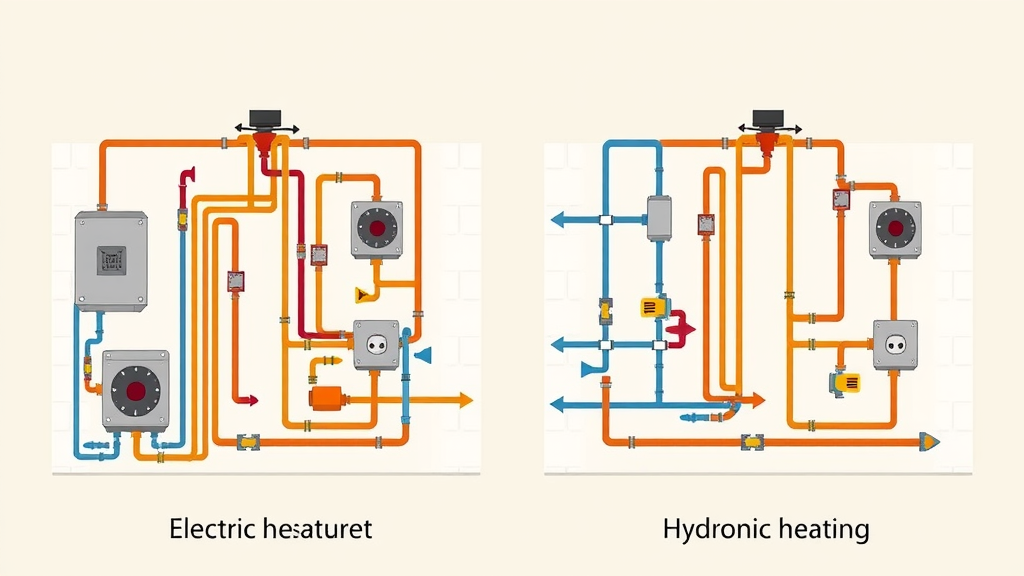
Factors Affecting System Choice: Floor Coverings, Room Size, and Budget
Choosing your underfloor heating system ultimately depends on three vital criteria: the type of flooring, room size, and the project budget. Tile, stone, and engineered wood are the most compatible with radiant floor heat, conducting warmth fast and evenly. Larger rooms, especially open-plan areas, are more economical with hydronic (water-based) solutions. For smaller single rooms or where budgets are tight, electric systems often make the most sense.
Budget-conscious upgrades spotlight electric radiant floors, while full renovations or new builds open up the efficiency of hydronic systems. Always consider professional installation for the best long-term results—expert installers ensure minimal heat loss, maximum efficiency, and system longevity. Your local climate, insulation, and planned use for the space will finalize the right choice for your home.
Installation Insights: How Underfloor Heating is Installed
Understanding how underfloor heating is installed will demystify the process and set expectations. Installation involves carefully preparing the floor system , adding insulation, placing heating cables or pipes, and testing the system before covering with chosen flooring. Electric systems are generally quicker to lay, especially with ready-to-install mats. Hydronic systems, requiring pipes and connection to a hot water source, take additional planning and expertise.
Professional installers survey your room, ensure a flat subfloor, and meticulously lay out the heat elements for even heat distribution. Correct insulation underneath the heating system is crucial: it stops heat loss to the ground and ensures comfort is delivered to your living space. After testing the system for leaks or electrical issues, your new heated floor is ready for its final finish—providing warmth for years to come.
Floor System Preparation and Key Steps in Installing Underfloor Heating
The first step in any underfloor installation is thorough subfloor preparation . Installers clean, level, and dry the area to prevent uneven heating or structural issues. Next, a layer of insulation is added to keep the heat moving upward into the room, not downward into the foundation. This is a crucial stage that directly impacts energy efficiency and running costs.
With the subfloor insulated, installers lay out electric heating cables or hydronic piping. Careful spacing and secure fixing ensure there are no hot or cold spots, guaranteeing radiant heat throughout the space. For electric mats, this step can be completed quickly; hydronic pipes demand more time and precise layout. Finally, the system is tested, covered with screed or self-leveling compound, and finished with your chosen floor covering.
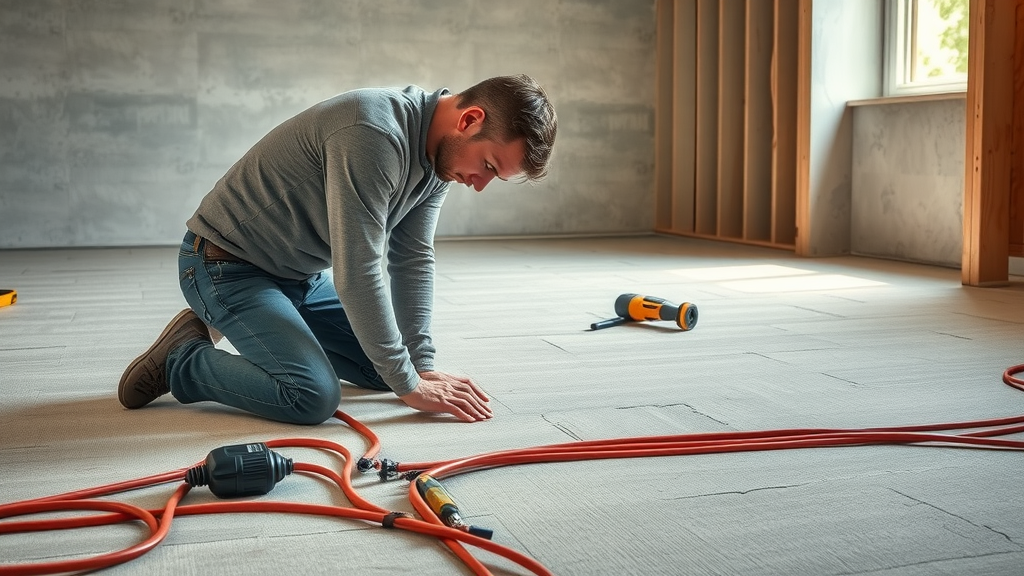
Safety, Insulation, and Energy Efficiency Tips for Your Heated Floor
Safety starts with certified installation and compatible floor systems. Always choose a professional installer who follows manufacturer instructions—the right insulation is vital for maximizing output and safety. Insulation boards or sheets placed under the heating element limit heat loss, driving more warmth upward where you want it.
Modern underfloor heating systems include built-in thermostats and safety sensors to avoid overheating and allow precise temperature control. To further improve efficiency, program your thermostat for active hours, use zoned heating where possible, and maintain good floor insulation. Together, these steps create a safe, lasting, and cost-effective floor heating system .
Cost Analysis: How Much Does Underfloor Heating Cost?
The cost of underfloor heating depends on several factors, including the type of system, room size, and installation complexity. Generally, electric systems are cheaper and faster to install but have higher long-term operating costs—especially in large areas. Hydronic systems cost more upfront but are particularly efficient for large, multi-room setups, delivering consistent heat at a lower monthly running cost. To help you compare, here’s a breakdown of typical costs.
| Item | Electric Radiant | Hydronic (Water) |
|---|---|---|
| Installation (per sq. ft) | $8–$15 | $12–$25 |
| Running Cost (monthly) | $20–$60 | $10–$20 |
Running Costs and Energy Efficiency of Underfloor Heating
Energy use is an important concern for most homeowners considering underfloor heating. Electric radiant floors tend to use more electricity, but today’s advanced systems include efficient thermostats and zoning —so you only heat the spaces you need, when you need them. Hydronic systems, especially when paired with a heat pump , offer the lowest energy costs for larger homes, as water can retain and circulate heat more efficiently than air.
Proper insulation is key to minimizing heat loss , directly affecting how much energy your system needs to maintain comfort. Upgrading insulation beneath your heating system pays off in energy savings and shorter heat-up times. Insulated pipes, rigid floor insulation, and well-sealed perimeters all contribute to long-term efficiency gains, resulting in cost-effective, reliable comfort.
Do Heated Floors Use a Lot of Electricity? Understanding Energy Use
Modern heated floors are surprisingly energy efficient, especially when properly insulated and programmed for real-world schedules. Although electric radiant floor heating does draw power, timers and smart thermostats mean you’re rarely running the system at full power all day. In smaller spaces and well-insulated rooms, electric systems can be both convenient and affordable.
Hydronic systems are inherently more efficient over large spaces. By moving hot water instead of electricity, they leverage the naturally superior heat retention of water, reducing daily energy use and recurring costs. If paired with eco-friendly heat sources, the energy needed to produce warmth drops even further—a smart move for long-term savings and eco-conscious living.
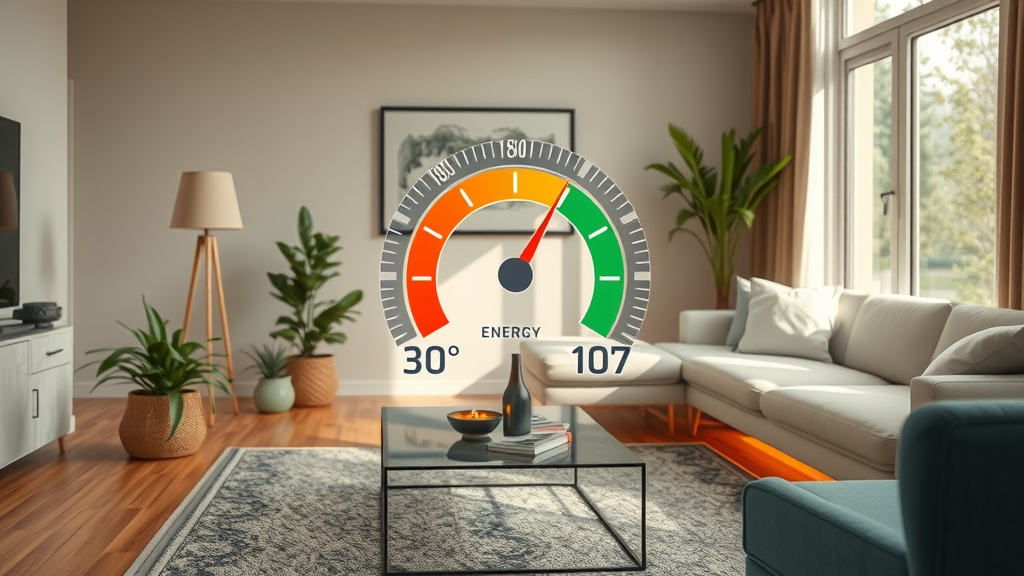
How to Minimize Heat Loss and Maximize Floor Heating Efficiency
To prevent costly heat loss , always install high-quality insulation directly beneath your system. This keeps warmth moving up into the living space, not lost to the subfloor or ground. Pay attention to insulating perimeters or any part of your home that could transfer heat outward—uninsulated gaps or poor edge insulation can undermine your entire system’s efficiency.
Optimizing your underfloor heating system also means zoning your home—for example, heating high-traffic rooms individually and relying on lower temperatures in little-used spaces. Smart thermostats and motion-activated controls are easy upgrades that keep comfort high and energy waste low. With proper planning, you’ll maximize every kilowatt or BTU, making radiant floors one of the smartest heating solutions around.
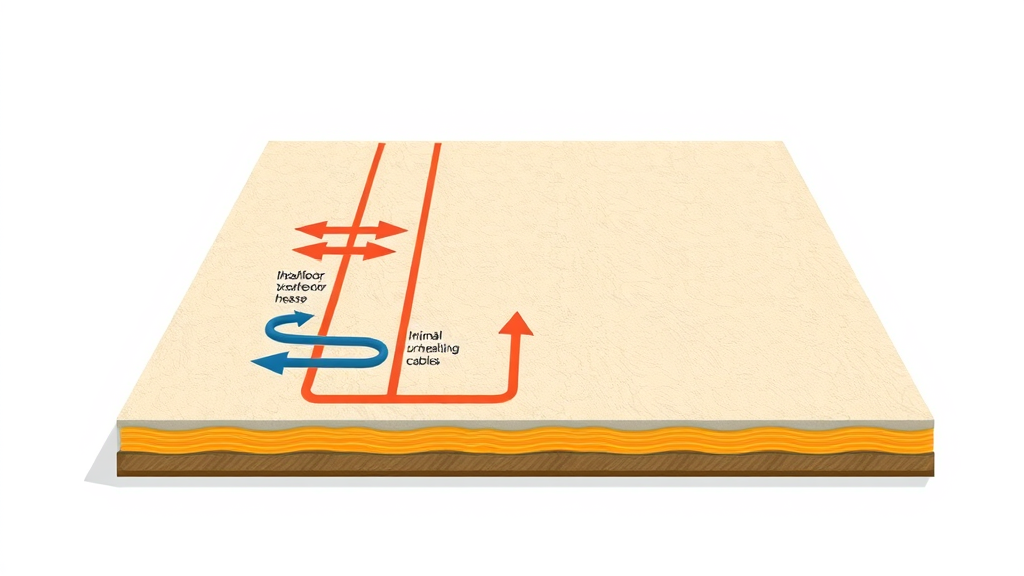
Best Flooring Types for Underfloor Heating: What Works, What Doesn't
The type of floor covering you choose can greatly impact the performance of your underfloor heating system . Some materials, like ceramic or porcelain tile, conduct heat rapidly, making them ideal companions for radiant floor systems. Others, like thick carpet or solid hardwood, can stifle heat transfer, reducing efficiency and delaying warm-up times. Choosing compatible flooring ensures that every bit of generated warmth is felt where you need it.
Beyond conductivity, consider expand-and-contract factors, thermal resistance (also called R-value), and manufacturer recommendations. Using the right flooring type means smoother, more reliable performance, and a longer system lifespan.
Most Suitable Floor Coverings: Tile, Stone, and Engineered Wood
Tiles (ceramic, porcelain, or stone) are hands-down the best choice for radiant floor heating . Their dense structure and high conductivity allow heat to move freely and efficiently from beneath, ensuring faster heat-up and consistent room warmth. Engineered wood is the next best option—its stability and thinner construction make it far more compatible with underfloor systems than solid hardwood.
Vinyl and luxury vinyl tile (LVT) can also pair well, provided the product is rated for floor heating. Always consult product specifications for maximum temperature tolerances, and aim for coverings with low thermal resistance. The result is a cozy, stylish finish matched with reliable floor heat every day.
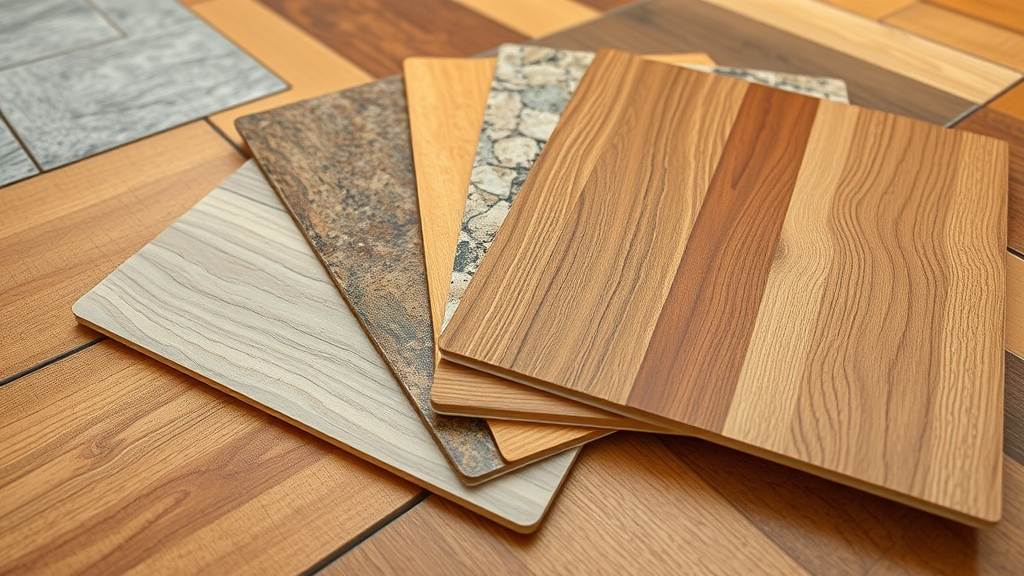
Flooring Materials to Avoid with Underfloor Heat Systems
Not every flooring type is a good candidate for underfloor heating. Thick carpets add significant thermal resistance, drastically slowing heat transfer. Similarly, solid hardwood planks are prone to drying, shrinking, and warping from repeated heating cycles, making them unsuitable for most radiant floor applications.
Some low-quality vinyl or laminate products may not withstand the consistently gentle heat, causing them to discolor or deform. Always review your flooring manufacturer’s recommendations before installation. Avoiding incompatible floors means safer operation, better efficiency, and peace of mind over the life of your underfloor heating system.
Maintenance, Durability, and Troubleshooting Underfloor Heat
One of the greatest perks of underfloor heating is minimal maintenance. After installation, radiant floor heating systems require little ongoing attention. Nevertheless, periodic checks for correct functioning and system health can preserve efficiency and head off rare but costly issues before they grow. Having a qualified technician conduct annual service—especially for hydronic systems—will keep everything in prime condition.
Common maintenance items include checking thermostats, inspecting wiring connections, and flushing hydronic pipes to prevent blockages or air bubbles in the system. Catching these small issues early prevents further heat loss or costly downtime and guarantees dependable performance, day in and day out.
Routine Checks and Long-Term Care for Radiant Floor Heating
For electric systems, annual visual checks of control panels, wiring, and floor performance keep peace of mind high. Hydronic (water-based) systems should have pipes and pumps inspected for leaks or circulation issues and, where applicable, pressure levels verified. Ongoing care extends system longevity and maintains comfort.
Keep your operational manual and installer’s contact information handy. Most issues can be solved swiftly with professional assistance. Modern systems come backed by robust manufacturer warranties—make sure you know yours and register your system promptly after installation.

Common Issues and How to Fix Problems with Floor Heat
Occasional glitches, like cold patches or incorrect thermostat readings, can stem from external electrical faults, thermostat misconfiguration, or (in rare cases) damage to heating elements. For hydronic systems, airlocks or pump failures can disrupt flow and reduce floor heat output. Most issues are easy to diagnose with built-in diagnostics on your control system and can be resolved by an expert in a single visit.
For persistent problems, consult your installation manual or reach out to a qualified service technician. Routine maintenance avoids most breakdowns, so prioritize annual system checks for hassle-free operation year-round. If replacing flooring or planning renovations, always inform your installer to prevent disruption to heating components hidden beneath.
FAQs: Everything You Need to Know About Underfloor Heating
What is the Downside of Underfloor Heating?
- Higher initial installation costs
- Longer heat-up times for some systems
- Professional installation recommended
While radiant floor heating promises comfort and energy efficiency, it involves a higher upfront investment and is best installed by a professional. Some systems, especially hydronic, take longer to reach full temperature, though this is offset by the steady, lasting warmth they provide.
Is Underfloor Heating Expensive to Run?
- Hydronic underfloor heating: usually cost-effective over time
- Electric radiant floors: can be costly in large rooms or poor insulation
Hydronic systems are the economical choice for large areas, while electric radiant floors excel for small, well-insulated spaces. The key is matching your choice of system to the room size and ensuring good insulation for maximum savings.
Do Heated Floors Use a Lot of Electricity?
- Modern systems are energy efficient
- Costs depend on insulation, floor area, and control timers
Today’s heated floors are designed for low energy consumption thanks to zoning and smart control features. Electricity use largely depends on how well-insulated your space is, how often you use the system, and the precise control settings in place.
What Flooring is Not Suitable for Underfloor Heating?
- Avoid thick carpets and solid hardwood
- Some vinyl and laminate flooring may not withstand heat
For best performance, steer clear of thick-pile carpets, solid timber, and any vinyl or laminate flooring not explicitly approved for use with underfloor heat. Always check manufacturer guidance to ensure compatibility.
Popular Brands, Warranty Insights, and Customer Reviews for Underfloor Heating
A wide range of trusted brands offers underfloor heating systems , each with unique selling points and robust warranty programs. Top names include Warmup, Nu-Heat, and Uponor, all known for high-quality materials and reliable customer support. Before committing to a system, compare warranty periods (typically 10–25 years for cables and water pipes) and what they cover—registration and professional installation are often required for full protection.
Well-reviewed brands consistently deliver even heat, strong after-sales care, and intuitive control systems. Don’t be swayed by price alone: warranty length, local installer networks, and ease of use can all influence your long-term satisfaction.
Comparison of Top Radiant Floor Heating Brands and Warranty Coverage
To help you choose, research reputable brands and their warranty offerings. Coverage typically extends to both the heating element and the thermostat controls. Some brands even offer extended coverage if the system is registered and installed by a certified professional, giving buyers peace of mind and protection for their investment.
Besides warranty, check product availability and service reviews in your area. Some brands stand out for quick customer support, replacement assistance, and a responsive dealer network—details that matter if you ever need help or wish to expand your floor heating system.
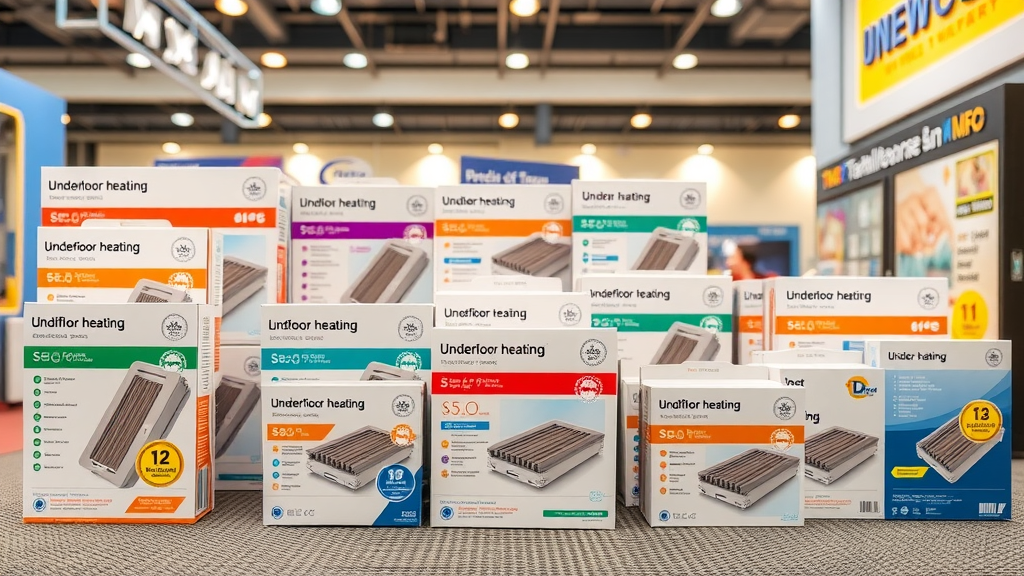
Reading Real User Feedback and Choosing a Reliable Heating Solution
Reading real-world reviews is invaluable when selecting your heating solution . Satisfied customers repeatedly mention the comfort upgrade, improved air quality, and low visibility compared to radiators. Pay special attention to comments about installation quality, system reliability, and ease of use. A brand’s reputation rests not only on product quality but on their willingness to support customers long after the sale.
Look for independent reviews, testimonials, and detailed product ratings online. If possible, ask friends or neighbors with installed systems about their experience. Many owners note that a professionally installed, well-chosen radiant floor heating system delivers outstanding comfort and significant reductions in heating bills—making it a wise, modern investment.

Key Points to Remember When Purchasing Underfloor Heating
- Know your room type and flooring compatibility
- Compare running costs for electric vs. hydronic systems
- Ensure professional installation for optimal performance
- Review warranties and aftercare
Keep these essentials in mind when choosing underfloor heating for your home. Informed decisions today mean years of comfort, efficiency, and peace of mind.
Take Action: Get Expert Guidance on Underfloor Heating Solutions
For expert help or advice visit Peak Underfloor Heating at https://peakunderfloorheating.com/
Ready to take the next step? For tailored recommendations and professional installation, consult with a trusted expert. They’ll help you evaluate your home, compare systems, and ensure seamless integration for cozy, energy-saving floors in every room.
If you’re inspired to make your home more efficient and want to explore additional ways to reduce energy costs, consider diving into comprehensive energy-efficient heating strategies . This guide goes beyond underfloor heating, offering actionable tips and advanced solutions to help you maximize comfort while minimizing expenses. Whether you’re planning a full renovation or just looking for smart upgrades, you’ll discover practical advice to future-proof your home’s heating. Take the next step toward a warmer, more sustainable living space by exploring the latest innovations in energy-saving technology.
Invest in the comfort, value, and efficiency of underfloor heating—choose the right system, the right floor, and expert installation for modern warmth that lasts.
Sources
- U.S. Department of Energy – https://www.energy.gov/energysaver/radiant-heating
- Warmup – https://www.warmup.com/blog/best-floors-for-underfloor-heating
- Which? – https://www.which.co.uk/reviews/home-heating-systems/article/underfloor-heating-axqmR2I1kLMY
- Hometree – https://www.hometree.co.uk/energy-advice/underfloor-heating-guide
Underfloor heating offers a modern, efficient way to warm your home, providing consistent comfort and freeing up wall space by eliminating the need for radiators. To delve deeper into this topic, consider exploring the following resources:
-
“Underfloor heating - Energy Saving Trust” : This guide provides an in-depth look at the different types of underfloor heating systems, their compatibility with heat pumps, and insights into installation costs and energy efficiency. ( energysavingtrust.org.uk )
-
“Underfloor heating (Wikipedia)” : This comprehensive article covers the history, types, features, and economic aspects of underfloor heating, offering a broad understanding of the subject. ( en.wikipedia.org )
If you’re serious about enhancing your home’s heating system, these resources will provide valuable insights to inform your decisions.
 Add Row
Add Row  Add
Add 









Write A Comment